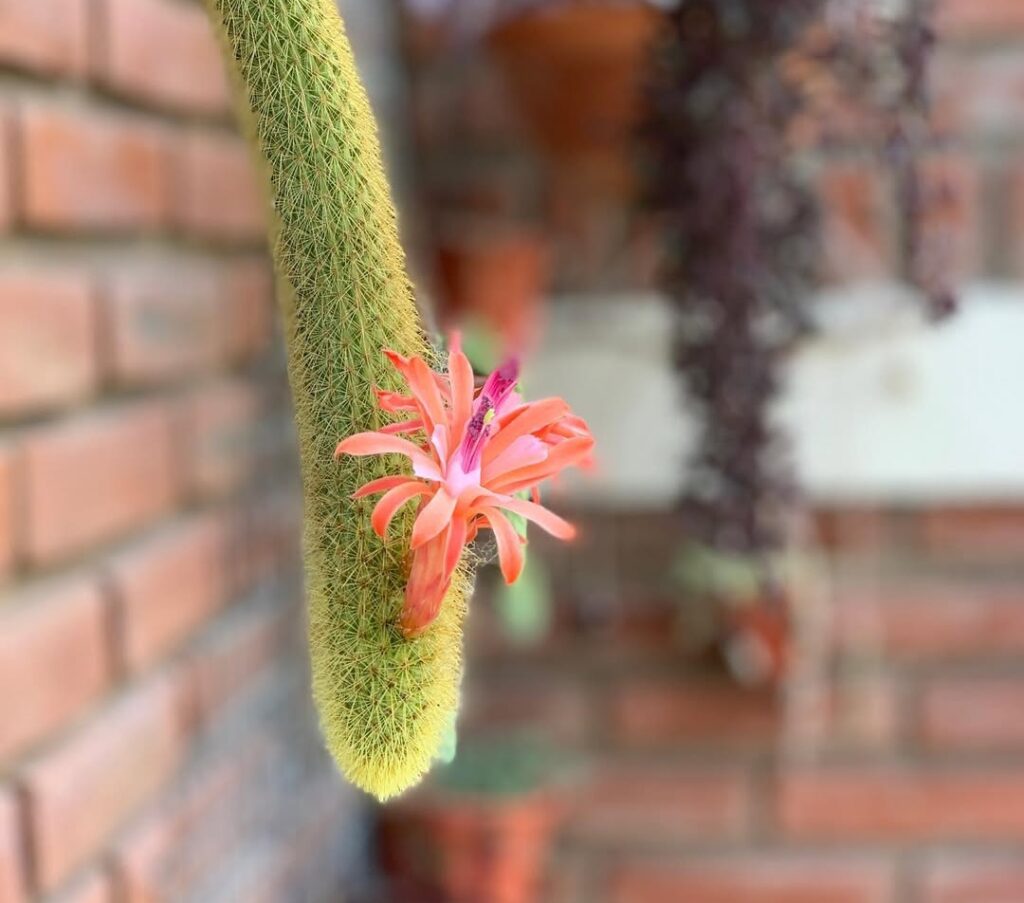Cactus flowers are some of the most stunning and rewarding blooms to witness, but getting your cactus to flower requires patience and the right care. Unlike other plants, cacti have specific environmental triggers that encourage blooming, such as temperature fluctuations, seasonal dormancy, and proper watering. Many beginners struggle to get their cacti to bloom because they unknowingly disrupt these natural cycles. By following these expert tips, you can create the perfect conditions to encourage flowering and enjoy vibrant cactus blooms year after year.

Cactus Flowering Care Timetable
| Season | Activity | Tips for Blooming |
|---|---|---|
| Spring | Begin light watering and increase sunlight | Place in bright indirect light; avoid overwatering |
| Late Spring | Start using bloom-boosting fertilizer (low nitrogen, high phosphorus) | Fertilize once a month to encourage bud formation |
| Summer | Maintain consistent care | Ensure 6+ hours of sunlight; water only when soil is dry |
| Late Summer | Watch for bud formation | Keep temperature stable; avoid sudden changes |
| Fall | Gradually reduce watering | Stop fertilizing; prepare for dormancy |
| Winter | Keep cactus in a cool, dry spot | Provide a dormant period (temp around 50–55°F / 10–13°C) |
| Late Winter | Resume light watering as buds may appear | Avoid moving the plant; increase light exposure slowly |
1. Provide Maximum Sunlight
Cacti need a significant amount of direct sunlight to produce flowers. Ideally, they should receive at least 6-8 hours of bright sunlight daily. If you’re growing them indoors, place them near a south-facing window where they can soak up the most sunlight. For outdoor cacti, choose a spot where they get full sun exposure throughout the day. If natural sunlight isn’t sufficient, supplement it with grow lights to provide the necessary intensity. Without enough light, cacti will remain green and healthy but will rarely flower.
Quick Tip: Rotate your cactus every few weeks to ensure even light exposure, preventing it from leaning toward one direction.
2. Ensure Proper Temperature Fluctuations
Cacti naturally experience warm days and cool nights in their native desert habitats, and these temperature variations play a key role in triggering flowering. During the growing season, maintain daytime temperatures between 70-90°F (21-32°C) and nighttime temperatures around 50-60°F (10-16°C). Keeping your cactus indoors at a constant temperature can delay or completely prevent blooming. To encourage flowering, move your cactus outdoors in the summer and let it experience natural temperature shifts. If you live in a colder climate, placing your cactus in a slightly cooler room at night can help mimic these conditions.
Quick Tip: Avoid placing your cactus near heat sources like radiators or vents, as excessive warmth without temperature drops can prevent flowering.
3. Maintain a Dry Winter Dormancy
One of the most crucial factors in getting a cactus to bloom is ensuring a proper dormancy period during winter. In the wild, cacti go through a dry, cool phase that signals them to prepare for flowering in the spring. To replicate this at home, reduce watering in the fall and stop fertilizing completely. Keep your cactus in a bright but cool area (50-55°F or 10-13°C) where it remains dormant. Avoid repotting or disturbing the plant during this time. If a cactus does not get a proper dormancy period, it will continue growing but may never flower.
Quick Tip: If your cactus has never flowered, check if it has experienced at least two to three months of dry dormancy during winter.
4. Use the Right Soil and Pot
Cacti need fast-draining soil to prevent root rot and encourage healthy growth. A high-quality cactus mix containing sand, perlite, or pumice is ideal. Using regular potting soil retains too much moisture, which can harm your cactus. Additionally, always choose terra cotta or clay pots with drainage holes, as these materials help wick away excess moisture, keeping the roots healthy. A well-draining pot and soil combination allows the plant to develop a strong root system, which is essential for flowering.
Quick Tip: Repot your cactus every two to three years with fresh soil to replenish nutrients and boost flowering potential.
5. Water Sparingly but Strategically
Proper watering is one of the biggest factors in cactus flowering. Overwatering is the number one reason cacti fail to bloom, as excess moisture leads to root rot and weak growth. The best approach is the “soak and dry” method—water deeply, then let the soil dry completely before watering again. Reduce watering significantly in fall and winter when the plant enters dormancy, then resume normal watering in early spring to encourage blooms. The goal is to mimic the natural rainfall cycle that triggers flowering in the wild.
Quick Tip: Use rainwater or distilled water to prevent the buildup of minerals and salts, which can affect flower development.
6. Fertilize with a Bloom Booster Formula
Fertilizing your cactus correctly can make a huge difference in whether or not it blooms. Choose a low-nitrogen, high-phosphorus fertilizer with a ratio around 5-10-10, as phosphorus promotes flowering. Apply fertilizer once a month during the growing season (spring and summer), but avoid over-fertilizing, as too much nitrogen encourages leafy growth instead of flowers. Stop feeding in fall and winter, as fertilizing during dormancy can disrupt the flowering cycle.
Quick Tip: Always dilute the fertilizer to half strength to prevent burning the roots, especially for small cacti.
7. Choose a Flowering Cactus Variety
Not all cacti bloom easily, and some species require specific conditions to produce flowers. If you want a flowering cactus, start with varieties known for frequent blooming, such as:
Christmas Cactus (Schlumbergera) – Produces stunning blooms in winter.
Easter Cactus (Rhipsalidopsis) – Flowers in early spring.
Rebutia and Mammillaria – Compact cacti that bloom profusely with proper care.
Each species has its own unique requirements, so research your specific cactus type to understand its blooming season and care needs.
Quick Tip: If you’re buying a new cactus, ask for a mature plant, as younger cacti may take years to reach flowering age.
Cactus flowering can take time, but with the right care, it is entirely possible to achieve stunning blooms. The key is to provide ample sunlight, mimic natural temperature shifts, maintain a dry dormancy period, and use the right soil, watering, and fertilization methods. Choosing a species known for blooming can also make the process easier. Be patient, as some cacti take several years before they bloom for the first time. With consistent care, your cactus will eventually reward you with beautiful, vibrant flowers. If you’ve had success getting your cactus to bloom,
FAQs
Why is my cactus not flowering?
Cactus flowering can be delayed if the plant isn’t getting enough light, hasn’t experienced winter dormancy, or is being overwatered. Ensure your cactus receives 6–8 hours of sunlight daily and a cool, dry rest period during winter to trigger cactus flowering in spring.
How long does it take for cactus flowering to occur?
Cactus flowering varies by species and age. Some cacti bloom within 2–3 years, while others may take 5–10 years. Proper care, including light, temperature, and water control, helps speed up cactus flowering over time.
What is the best fertilizer for cactus flowering?
For optimal cactus flowering, use a low-nitrogen, high-phosphorus fertilizer such as 5-10-10 during the growing season. This promotes flower bud formation without encouraging excessive foliage growth, which can delay cactus flowering.
Can cactus flowering happen indoors?
Yes, cactus flowering can happen indoors if conditions are right. Use grow lights to mimic full sun, place the plant near a south-facing window, and follow a strict watering and dormancy schedule to stimulate cactus flowering indoors.
Do all cacti bloom every year?
Not all cacti bloom annually. Cactus flowering depends on plant maturity, care conditions, and species type. Some bloom yearly with consistent care, while others may flower every few years or even less frequently.
What time of year does cactus flowering usually happen?
Most cactus flowering occurs in spring or early summer, especially after a winter dormancy. However, species like Christmas and Easter cacti bloom in winter and early spring. Understanding your cactus’s bloom cycle is crucial to timing cactus flowering.
How does winter dormancy affect cactus flowering?
Winter dormancy is essential for cactus flowering. During this phase, reduce watering and keep the cactus in a cool, bright space. This rest period tells the cactus it’s time to prepare for blooming in the next season.
Can repotting affect cactus flowering?
Yes, repotting can affect cactus flowering. If done too frequently or at the wrong time (like during dormancy), it can stress the plant and delay blooms. Repot only every 2–3 years to support healthy cactus flowering.
What are the signs that cactus flowering is about to start?
Before cactus flowering, you may notice bud formation, increased new growth, and a slight color change near the plant’s crown. Keep up consistent care to support full cactus flowering once buds appear.
Do temperature changes influence cactus flowering?
Yes, temperature changes play a major role in cactus flowering. Warm days and cool nights mimic natural desert conditions, which signal the plant to bloom. Without this fluctuation, cactus flowering may be inhibited.
Should I prune my cactus to encourage flowering?
Most cacti don’t need pruning for flowering. However, removing dead or damaged parts can improve overall health, indirectly helping cactus flowering. Avoid over-pruning, as this can stress the plant and reduce blooming chances.
Is cactus flowering affected by pot size?
Pot size can impact cactus flowering if the pot is too large and retains excess moisture. Choose a well-draining, appropriately sized pot that encourages root development and supports cactus flowering without risking rot.
Can cactus flowering happen more than once a year?
Some cacti can bloom multiple times per year, especially tropical varieties like Schlumbergera. However, most desert cacti produce flowers only once annually. Proper conditions may increase the frequency of cactus flowering.
Do flowering cacti require more water?
During cactus flowering, slight increases in watering may help support blooms, but overwatering should still be avoided. Stick to the soak-and-dry method to avoid root rot while encouraging healthy cactus flowering.
Can I force cactus flowering artificially?
While you can’t force cactus flowering overnight, you can simulate natural triggers like cool temperatures, bright light, and reduced watering to encourage blooming. Patience and consistency are key to successful cactus flowering.




